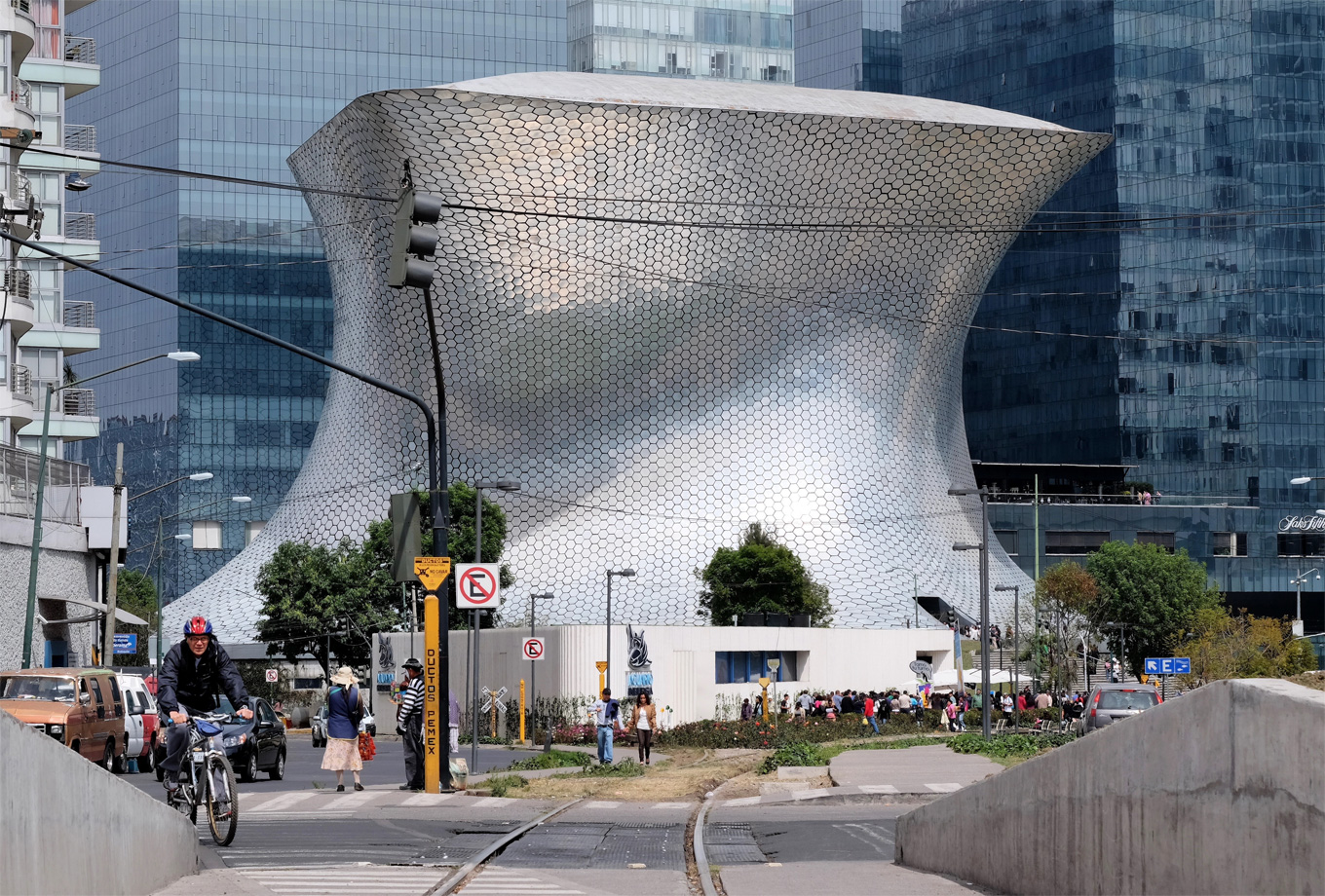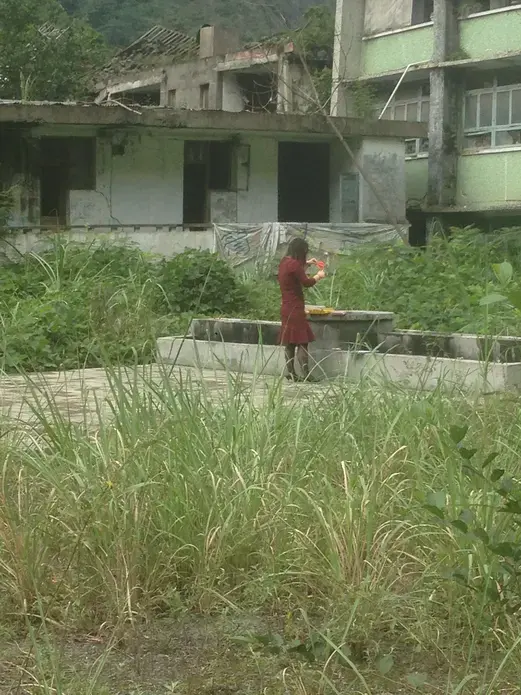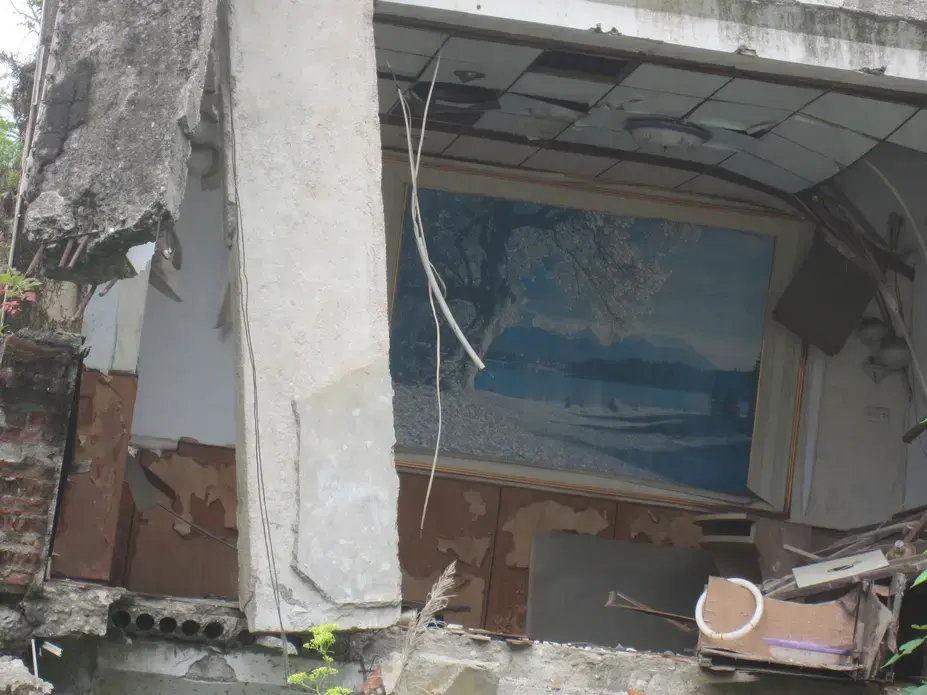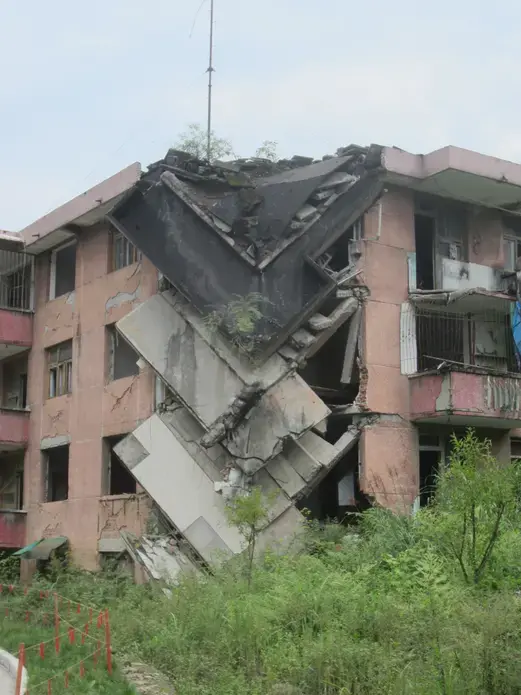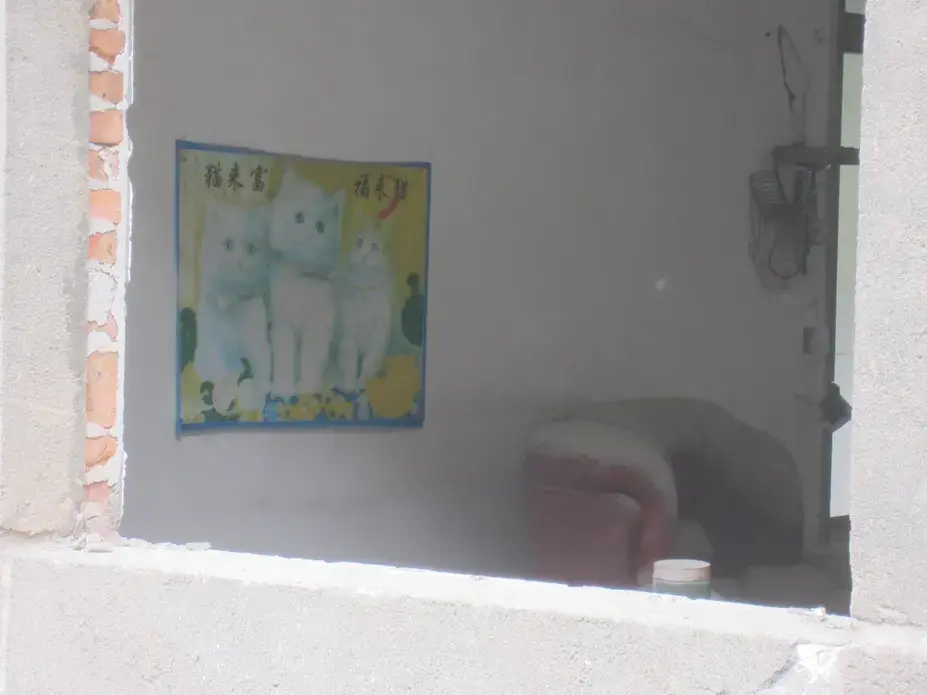The plaque at the entry gate brags that "the earthquake relic of old Beichuan County is so far the biggest catastrophic relic originally preserved around the world." This may seem like a strange Guinness Book distinction to pursue but a walk around the ruins offers a certain defense. We think we know what earthquake ruins look like—buildings crumbled into piles of bricks, bent rebar sticking out of shorn concrete—and there is plenty of that in Old Beichuan. Several leaning towers have been permanently preserved at precarious angles by metal braces added by the museum curators. But there are also far stranger sites that testify to the fact that earthquakes strike along the faultline between the natural environment and the human environment. A four-story stucco building stands completely erect save for one corner, where each floor-plate has slumped onto the one below creating a pattern of cascading downward-pointing triangles. The curved white-brick roof of the seven-story credit union now lodged in the ground at a 30-degree angle like some crashed flying saucer. The China Telecom office is still standing while its metal radio tower lies limp against its façade. The metal Chinese characters once mounted atop the primary school are still attached to the roof but now held aloft in mid-tumble like a freeze-frame waterfall.
The most intriguing spaces are those where buildings defy expectation but the most affecting spaces are those where the private has been rendered public. Several residential buildings held up well while their facades gave way, giving clear views into people's perfectly preserved apartments. In one home, a bookshelf sits just as it was on that May day in 2008 with the books still on it. You can see right into strangers' homes in a manner only invited guests ordinarily access. One resident decorated his home with a landscape poster of a mountain rising up behind a blossoming cherry tree. Another living room has a poster of three kittens on it next to a dust-covered red leather easy chair. Walking along the circuit laid out for visitors, I pass an unmarked supermarket, its shelves picked bare soon after the earthquake just discernible through the darkened entryway. At the town's Suzuki dealership, the grass has grown so high it is hard to see inside it. The only sign out front seems to dissuade the very questions the ruin prompts: "Leave Peace To The Passed."
The curation feels like a conspiracy to answer all the questions you don't have and none of the questions you do have. If I'd been wondering whether the collapsed building in front of me was the Beichuan Sub-branch of the Agricultural Development Bank or the Regional Credit Cooperative Association, a plaque will duly answer that question in Chinese and English not to mention Japanese, Korean, and French. And if I wanted to know how much money was recovered from the Credit Cooperative, I'd be duly informed, "the PLA Second Artillery Corps and Jiangsu Fire Forces worked together for nine days and eight nights continuously, and managed to dig out over 6.4 million yuan in cash." But the most urgent questions—Why did some buildings collapse and others didn't? What was the panicked scene like in the supermarket just after the quake? Who put up that kitten poster and did she survive?—go unasked and unanswered.
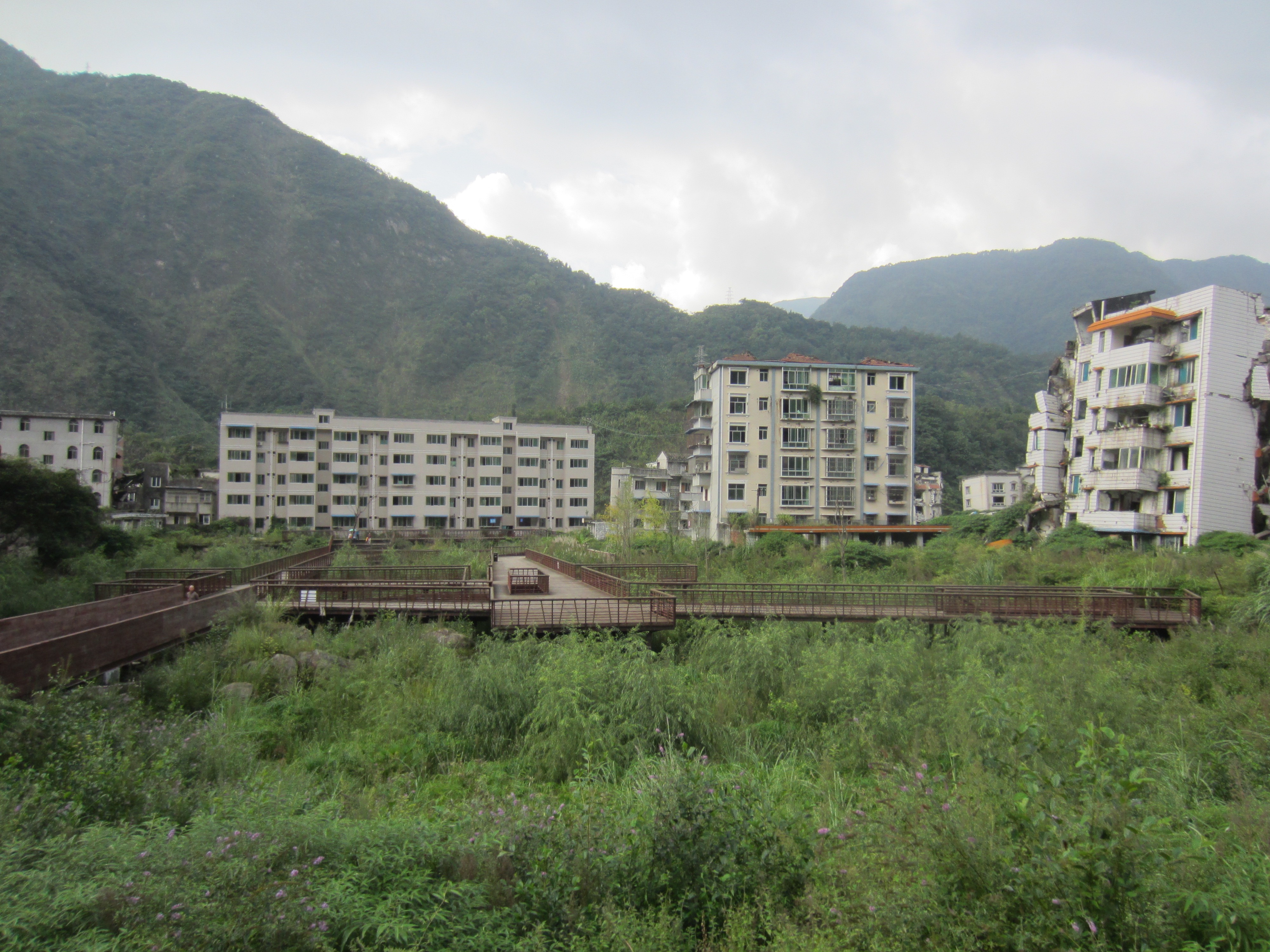
Education Resource
Meet the Journalist: Daniel Brook
In his multi-country series, "Urbanization in the Developing World," journalist and author Daniel...


